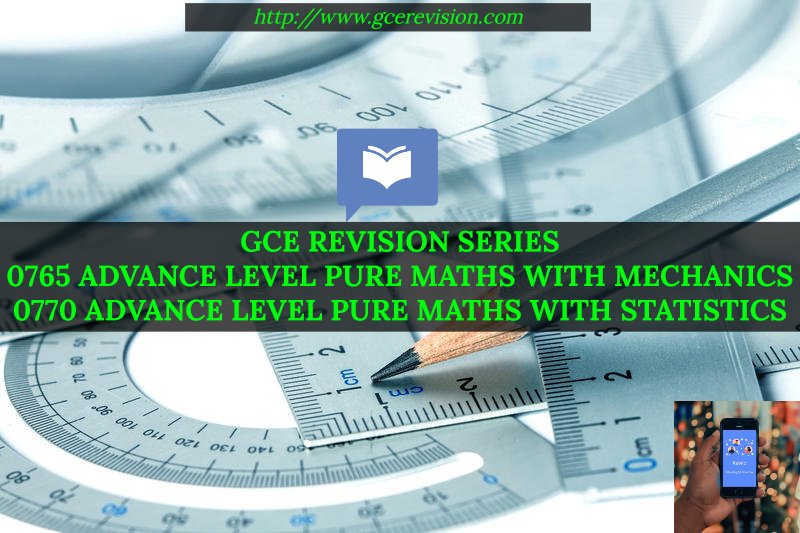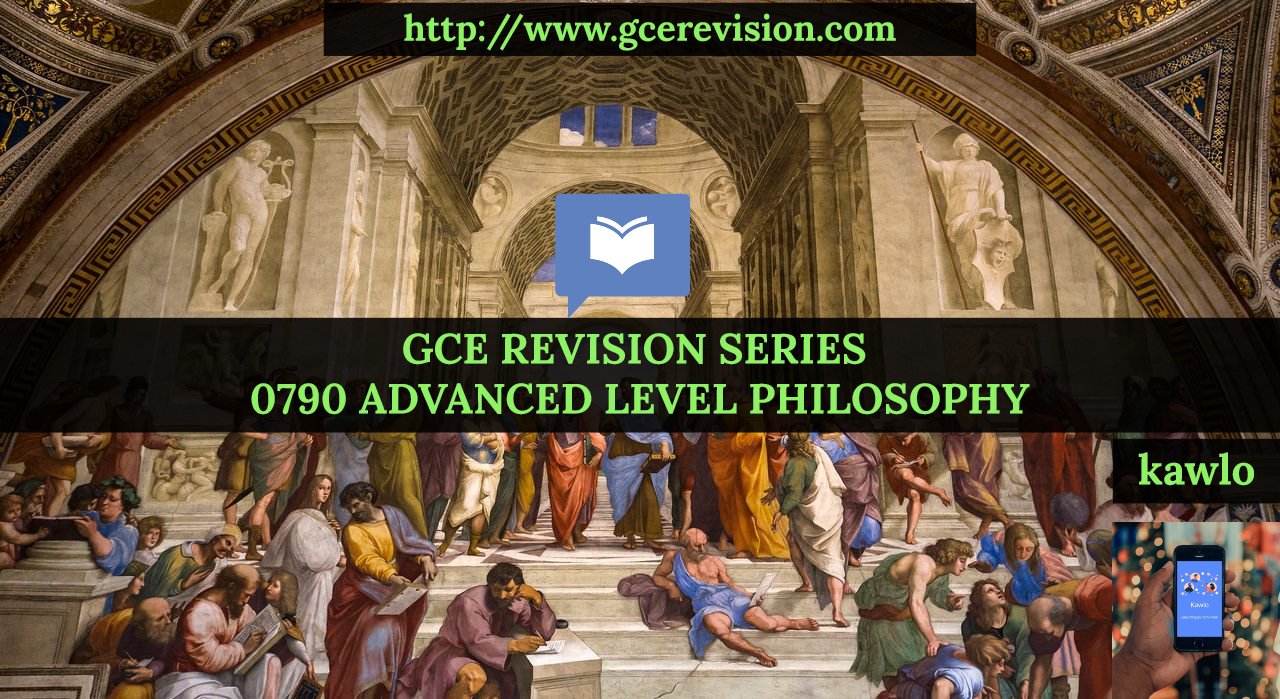MEDIATE INFERENCE
MEDIATE INFERENCE
- DEFINITION OF THE SYLLOGISM:
The syllogism is a form of mediate inference because it hinders on a third term called middle term
A syllogism is an argument made up of three propositions in which from two premises having a middle term, we can derive another one called the conclusion which necessarily follows from the premises. To Aristotle, the syllogism is a triad of connected propositions so related that one of them called the conclusion follows from the others called the premise
Example
All monkeys are animals.
All animals are wild creatures.
Therefore, all wild creatures are monkeys.
The value of the Syllogism
- The syllogism is vital tool for clarity in reasoning.
- It is an instrument for asserting new truths
- It is a test for consistency, for it can furnish truth for propositions.
- It helps in preventing hasty inferences
- The structure of a categorical proposition.
There are four kinds of categorical propositions but in this chapter we are going to limit ourselves to the categorical propositions. E.g.
All boys are intelligent
Some boys play foot ball
Therefore, some players are intelligent persons
A categorical syllogism is made up of a two premises and a conclusion. The syllogistic argument is made up of three terms; the major term, the minor term, the middle term.
- The major term is the predicate of the conclusion. It helps to identify the major premise.
- The minor premise is the subject term of the conclusion. It helps to identify the major premise
- The middle term is the common found in the two premises and not in the conclusion. It serves as hinge to the argument.
In the above syllogism, the major term is intelligent persons and as such the major premise is all boys are intelligent persons. The minor term is some players and as such the minor premise is some boys play football.
The general rules of the syllogism and practice
- Rules of structure
When a categorical syllogism contains more than three terms, it commits the fallacy of Quaternerio Terminirium or the fallacy of four terms.
- Rules of distribution:
if the middle premise is mot distributed in at least one premise, then the proposition is invalid and commits the fallacy of Undistributed middle
A term distributed in the conclusion must be distributed in the premises. IF it fails, then it commits the fallacy of illicit process which is either of the major or the minor.
- Rules of quality:
From two negative premises, no valid conclusion can be drawn (EE, OO, EO, OE). If the premises are as such, then they commit the fallacy Exclusive Premise.
IF one premise is negative, then its conclusion must be negative. IF not, it commits the fallacy of drawing an affirmative conclusion from a negative premise.
- Rules of quantity:
If one premise is particular, then the conclusion must be particular
From two particular premises, no conclusion can be drawn.
THE FIGURES,SPECIAL RULES AND MOODS OF THE SYLLOGISM
Definition of the figure:
This refers to the logical structure of a syllogism as determined by the changing position of the middle term in the premises
Structure of the figures and special rules
- Fisrt figure : it takes the form
MP All M are P
SM ALL s are m
SP All s are p
Rules
- the minor premise must be affirmative.
- The major pre must be must be universal.
- Second figure:
PM All p are m
SM All s are m
SP Therefore all s are p
RULES
- One of the premises must be negative.
- The major premise must be universal.
- Third figure:
All m are p
All m are s
Therefore all s are p
RULES
- The minor premise must be affirmative
- The conclusion must be particular
- Fourth figure:
All p are m
All m are p
All s are p
Rules
- Definition of the mood of the syllogism: this is the determination of the syllogism according to the quantity and the quality of the constituent propositions in the syllogism.
- The nature of mood of syllogism: it refers to the manner in which the three vowels representing the propositions in a syllogism occur in a consecutive order, beginning from the major premisre, the minor premise and the conclusion.
Each of the propositions of the syllogism in the following figures is designated by the appropriate vowel: A, E, I and Owhich are written consecutively. For example, in the figure below:
No scholars are illiterates.
All scientists are Scholars.
No scientists are illiterates.
The mood is EAE, whereby the first E represents the major premise, A for the minor premise and E FOR THE Conclusion.
The venn diagram technique
- Procedures in respecting the Venn diagram technique
First draw two intersecting circles with the minor term labelled S on the left and the major term labelled P on the right. Then a third circle that intersects the two circles labelled M representing the middle term.
- Diagramming the propositions in arguments
To diagram a proposition, treat each proposition as an entity. Remember to diagram empty portions with shaded areas, and x for portions which are not empty. Also remember that when you translate “All M are P” it means M outside P is empty, “No S are P” Means M inside P IS empty, “some S are p” As well as “some arenot M” means that S outside M is not empty.
- DEFINITION OF THE SYLLOGISM:
The syllogism is a form of mediate inference because it hinders on a third term called middle term
A syllogism is an argument made up of three propositions in which from two premises having a middle term, we can derive another one called the conclusion which necessarily follows from the premises. To Aristotle, the syllogism is a triad of connected propositions so related that one of them called the conclusion follows from the others called the premise
Example
All monkeys are animals.
All animals are wild creatures.
Therefore, all wild creatures are monkeys.
The value of the Syllogism
- The syllogism is vital tool for clarity in reasoning.
- It is an instrument for asserting new truths
- It is a test for consistency, for it can furnish truth for propositions.
- It helps in preventing hasty inferences
- The structure of a categorical proposition.
There are four kinds of categorical propositions but in this chapter we are going to limit ourselves to the categorical propositions. E.g.
All boys are intelligent
Some boys play foot ball
Therefore, some players are intelligent persons
A categorical syllogism is made up of a two premises and a conclusion. The syllogistic argument is made up of three terms; the major term, the minor term, the middle term.
- The major term is the predicate of the conclusion. It helps to identify the major premise.
- The minor premise is the subject term of the conclusion. It helps to identify the major premise
- The middle term is the common found in the two premises and not in the conclusion. It serves as hinge to the argument.
In the above syllogism, the major term is intelligent persons and as such the major premise is all boys are intelligent persons. The minor term is some players and as such the minor premise is some boys play football.
The general rules of the syllogism and practice
- Rules of structure
When a categorical syllogism contains more than three terms, it commits the fallacy of Quaternerio Terminirium or the fallacy of four terms.
- Rules of distribution:
if the middle premise is mot distributed in at least one premise, then the proposition is invalid and commits the fallacy of Undistributed middle
A term distributed in the conclusion must be distributed in the premises. IF it fails, then it commits the fallacy of illicit process which is either of the major or the minor.
- Rules of quality:
From two negative premises, no valid conclusion can be drawn (EE, OO, EO, OE). If the premises are as such, then they commit the fallacy Exclusive Premise.
IF one premise is negative, then its conclusion must be negative. IF not, it commits the fallacy of drawing an affirmative conclusion from a negative premise.
- Rules of quantity:
If one premise is particular, then the conclusion must be particular
From two particular premises, no conclusion can be drawn.
THE FIGURES,SPECIAL RULES AND MOODS OF THE SYLLOGISM
Definition of the figure:
This refers to the logical structure of a syllogism as determined by the changing position of the middle term in the premises
Structure of the figures and special rules
- Fisrt figure : it takes the form
MP All M are P
SM ALL s are m
SP All s are p
Rules
- the minor premise must be affirmative.
- The major pre must be must be universal.
- Second figure:
PM All p are m
SM All s are m
SP Therefore all s are p
RULES
- One of the premises must be negative.
- The major premise must be universal.
- Third figure:
All m are p
All m are s
Therefore all s are p
RULES
- The minor premise must be affirmative
- The conclusion must be particular
- Fourth figure:
All p are m
All m are p
All s are p
Rules
- Definition of the mood of the syllogism: this is the determination of the syllogism according to the quantity and the quality of the constituent propositions in the syllogism.
- The nature of mood of syllogism: it refers to the manner in which the three vowels representing the propositions in a syllogism occur in a consecutive order, beginning from the major premisre, the minor premise and the conclusion.
Each of the propositions of the syllogism in the following figures is designated by the appropriate vowel: A, E, I and Owhich are written consecutively. For example, in the figure below:
No scholars are illiterates.
All scientists are Scholars.
No scientists are illiterates.
The mood is EAE, whereby the first E represents the major premise, A for the minor premise and E FOR THE Conclusion.
The venn diagram technique
- Procedures in respecting the Venn diagram technique
First draw two intersecting circles with the minor term labelled S on the left and the major term labelled P on the right. Then a third circle that intersects the two circles labelled M representing the middle term.
- Diagramming the propositions in arguments
To diagram a proposition, treat each proposition as an entity. Remember to diagram empty portions with shaded areas, and x for portions which are not empty. Also remember that when you translate “All M are P” it means M outside P is empty, “No S are P” Means M inside P IS empty, “some S are p” As well as “some arenot M” means that S outside M is not empty.











